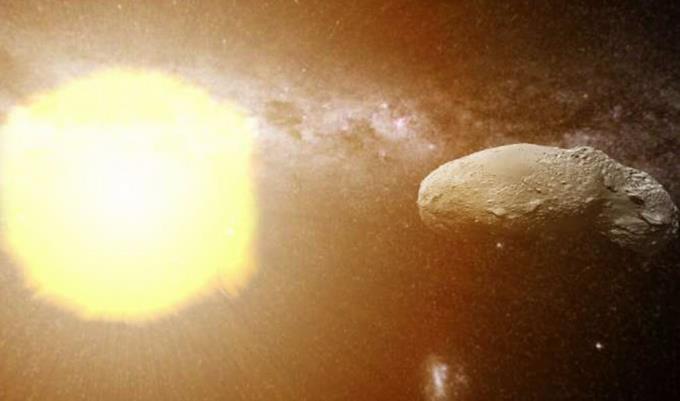An international team of researchers led by the University of Glasgow has revealed that the sun is an “amazing” source of water on Earth.
They report that solar air, made up of particles charged from the sun, mostly hydrogen ions, formed water on the surface of the dust grains carried by asteroids that hit Earth in the early days.
Professor Bill Bland, director of the Center for Space Science and Technology (SSTC) at Curtin University in Australia, explains that more than 70 percent of the Earth’s oceans are filled with water compared to other rocky planets in the Solar System. Surface, and scientists have long wondered about its exact appearance.
An existing theory is that water was carried to Earth in the final stages of formation on C-type asteroids, although previous experiments with the isotopic “fingerprint” of these asteroids found that on average they did not match water. Earth, at least there was another unaccounted source, ” says Professor Bland. Our research suggests that solar wind formed water on the surface of small dust grains and that this isotopic lighter water may have provided the rest of the Earth’s water.
“This new theory of solar wind, a microscopic analysis of small fragments of near-Earth S-type asteroids called Idokawa, was collected by the Japanese space explorer Hayabusa and returned to Earth in 2010,” he continues.
The researcher notes that the Curtin University Atomic Energy Study tomography system “allowed the first 50 nanometers or so of incredible visibility on the surface of the Itokawa dust grains, which we found contained enough water, which, if expanded, would be equivalent to that”. 20 liters for every cubic meter of rock, ”he says.
For his part, Dr. Luke Daly, a graduate of Curtin and currently at the University of Glasgow, says the research could not only provide scientists with significant insights into Earth’s water resources in the past, but also help future space travel.
“One of the obstacles to future space exploration is how astronauts can get enough water without carrying objects,” he explains. “Our research shows that the same space meteorological process that created water in Itokawa may have occurred on other anaerobic planets. This means that astronauts can process fresh water directly from dust on the surface of a planet like the Moon.
The research was funded by the Council for Scientific and Technological Facilities (part of the UKRI) and was conducted by researchers from the University of Glasgow, the University of Curtin, the University of Sydney, the University of Oxford, the University of Hawaii in Manoah, and the Museum. Natural History, Idaho National Laboratory, Lockheed Martin, Sandia National Laboratories, NASA Johnson Space Center, University of Virginia, University of Northern Arizona and University of Purdue.





